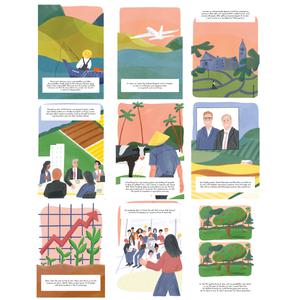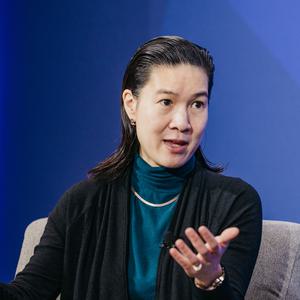While it's hard to equate green acres with negative environmental impacts, the reality is that the agricultural industry is a major contributor to climate change. Agriculture is responsible for approximately 11% of greenhouse gas (GHG) emissions in the U.S, and the agriculture, forestry, and other land use (AFOLU) sector overall needs to cut emissions by two-thirds by midcentury to meet climate goals established in the Paris Agreement. Ensuring that the nearly 8 billion people around the world have access to sufficient quality food and nutrition further complicates addressing the impacts of agriculture on the environment. Simultaneously, the weather impacts of climate change are making it increasingly difficult for farmers and ag-related businesses to depend on reliable production, creating economic insecurity and threatening livelihoods and businesses.
How to address the interwoven challenges of cutting emissions, increasing yields and quality, and protecting business viability? Several Flagship Pioneering-founded companies are advancing science, technologies, and market opportunities that provide a path forward.
From farming cotton to carbon
Inherent to plant growth is fixation of carbon from the atmosphere into plant biomass during photosynthesis. This carbon is sequestered as soil organic carbon (SOC) from growth and death of plant roots, as well as during transfer of carbon compounds to soil microbes. Regenerative agriculture practices that restore natural systems are critical to turning farms from carbon sources to carbon sinks.
Cover crops are one regenerative practice that helps to reduce carbon losses and increase carbon inputs to the soil. These crops are planted not for harvest but to cover land that would otherwise be left fallow, which protects the soil from erosion, allows longer periods of photosynthetic activity, and increases water availability. Farmers can choose to plant grasses (e.g., rye, wheat, barley, oats, buckwheat), legumes (e.g., clovers, field peas, alfalfa), brassicas (e.g., mustard, radish, canola), or a combination of these species based on the farm’s requirements and benefits to the cash crop. Grasses, for example, are favored for increasing SOC, while legumes increase soil nutrient content by fixing nitrogen. Although some farmers report struggling to find access to cover crop seeds and knowhow in their communities, the U.S. Agricultural Census notes a 15.2% increase in the number of farms planting cover crops from 2012 to 2017.








